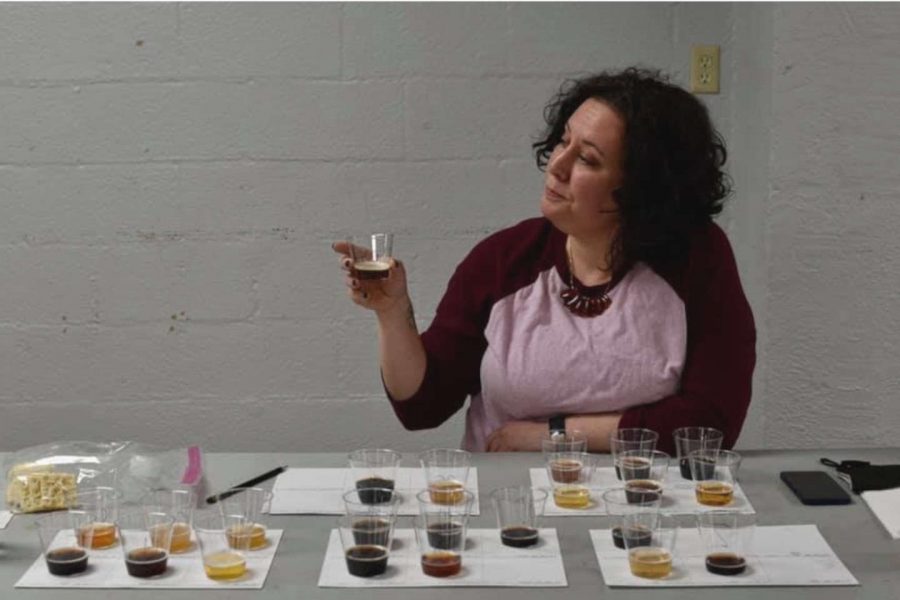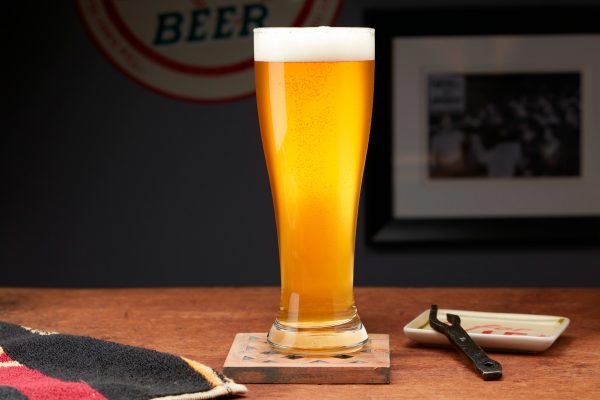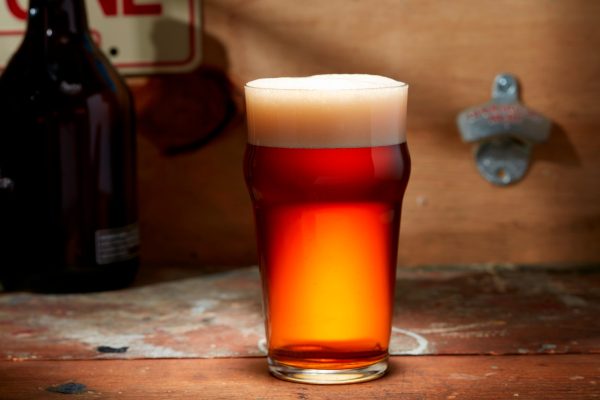
Jen Blair—American Homebrewers Association Governing Committee Member, Advanced Cicerone, and National BJCP beer judge—shares a beer recipe for her American-style barleywine.
What’s significant to you about this homebrew recipe?
Barleywine is one of my favorite beer styles. This was my first homebrew recipe to win a medal in a homebrew competition. Over the years, I’ve won a handful of awards with this recipe.
The finished beer is a beautiful deep-red color and has a rich dark cherry and caramel flavor. It finishes with moderate alcohol warmth. Although I consider barleywine a year-round option, it’s the perfect beer to brew in the late summer and let mellow for a few months to break out on that first cold weekend of the year.
This barleywine recipe is also very forgiving and an excellent basis to experiment with different hops and specialty malts. I brew it a little differently each time, depending on what hops I have on hand and what brewing equipment I’m using.
Tell us about homebrewing this recipe!
It’s an adventure in fitting all of the grain into the mash tun each time I brew it. Homebrewing requires a certain degree of flexibility! The first time, the mash tun was filled to the brim and even overflowed a little bit.
The next time I brewed the recipe, I brewed 15 gallons destined for a bourbon barrel, so the recipe was divided into three 5-gallon batches, which made for a long brew day. I somehow forgot to add some of the grain to the second batch, but I was able to make up the loss of gravity with DME (dry malt extract) I had on hand—a technique I learned on the fly.
The last time I made it was with new homebrewing equipment (a Brewzilla), and I discovered almost too late that all of the grain would not fit into the vessel. I decided to employ the reiterative mashing technique, also known as a poly-gyle (not to be confused with parti-gyle). This technique uses multiple mashes, with the wort from the previous batch being used as the liquor for the next until you hit your target gravity.
About Jen
I began homebrewing in 2014. My boyfriend (now husband) and I shared a love of beer, and he was learning to homebrew from one of his friends. I really enjoy cooking and discovering the “how” behind the “why,” so learning how to make beer was a natural step for me.
We dove straight into all-grain homebrewing, although I’ve done a few extract batches over the years. My very first homebrew recipe was a pale ale bittered with marigolds. I remember it being very bitter, but it was mine, and it came from an idea that I came up with, so I loved it!
Jen Blair—American Homebrewers Association Governing Committee Member, Advanced Cicerone, and National BJCP beer judge—shares a beer recipe for her American-style barleywine.
What’s significant to you about this homebrew recipe?
Barleywine is one of my favorite beer styles. This was my first homebrew recipe to win a medal in a homebrew competition. Over the years, I’ve won a handful of awards with this recipe.
The finished beer is a beautiful deep-red color and has a rich dark cherry and caramel flavor. It finishes with moderate alcohol warmth. Although I consider barleywine a year-round option, it’s the perfect beer to brew in the late summer and let mellow for a few months to break out on that first cold weekend of the year.
This barleywine recipe is also very forgiving and an excellent basis to experiment with different hops and specialty malts. I brew it a little differently each time, depending on what hops I have on hand and what brewing equipment I’m using.
Tell us about homebrewing this recipe!
It’s an adventure in fitting all of the grain into the mash tun each time I brew it. Homebrewing requires a certain degree of flexibility! The first time, the mash tun was filled to the brim and even overflowed a little bit.
The next time I brewed the recipe, I brewed 15 gallons destined for a bourbon barrel, so the recipe was divided into three 5-gallon batches, which made for a long brew day. I somehow forgot to add some of the grain to the second batch, but I was able to make up the loss of gravity with DME (dry malt extract) I had on hand—a technique I learned on the fly.
The last time I made it was with new homebrewing equipment (a Brewzilla), and I discovered almost too late that all of the grain would not fit into the vessel. I decided to employ the reiterative mashing technique, also known as a poly-gyle (not to be confused with parti-gyle). This technique uses multiple mashes, with the wort from the previous batch being used as the liquor for the next until you hit your target gravity.
About Jen
I began homebrewing in 2014. My boyfriend (now husband) and I shared a love of beer, and he was learning to homebrew from one of his friends. I really enjoy cooking and discovering the “how” behind the “why,” so learning how to make beer was a natural step for me.
We dove straight into all-grain homebrewing, although I’ve done a few extract batches over the years. My very first homebrew recipe was a pale ale bittered with marigolds. I remember it being very bitter, but it was mine, and it came from an idea that I came up with, so I loved it!
Ingredients:
- 17.2 lb Pale malt (US 2-row)
- 2 lb Carared malt
- 2 lb Crystal 60 malt
- 1 oz Zythos hops, 10.9% a.a. (60 min)
- 0.50 oz Simcoe hops, 13% a.a. (60 min)
- 1 oz Simcoe, 13% a.a. (20 min)
- 1 oz Zythos hops, 10.9% a.a. (20 min)
- 1 oz Simcoe hops, 13% a.a. (5 min)
- 0.5 oz Zythos hops, 10.9% a.a. (5 min)
Specifications:
Yield: 5 gallons
Original Gravity: 1.092
Final Gravity: 1.016
ABV: 9.6%
IBU: 100
SRM: 17.2
Directions:
Mash at 156* F for 45 minutes. The estimated pre-boil gravity is 1.072. Conduct a 90 minute boil, following the hop schedule as noted in the ingredients section. Ferment at 67° F. After bottling/kegging, it is recommended to allow the beer to age for 30 days. Enjoy!






Share Post